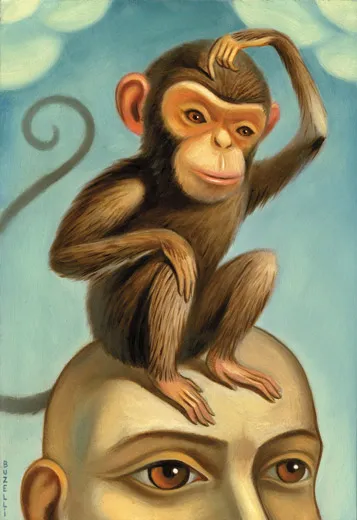Why Don’t Animals Go Bald, Like Humans and Other Questions From Our Readers
Your questions answered by our experts
/https://tf-cmsv2-smithsonianmag-media.s3.amazonaws.com/filer/Ask-Smithsonian-monkey-631.jpg)
Why don’t animals go bald, like humans?
Laura Sanders, Darien, Connecticut
Actually, they do—I’ve seen hair or fur loss in several animals, including coatis, Andean bears and cats of various species. In most cases, the animal was well past the average life expectancy of its species, so my guess is that animals in the wild tend not to live long enough to suffer this effect of aging, unless they have a disease that causes their hair or fur to fall out.
Craig Saffoe, Curator of Great Cats
National Zoo
What is the oldest artifact in the Smithsonian’s collections?
Maria K. Sicree, Boalsburg, Pennsylvania
The Smithsonian’s collections transport us back millions of years to humanity’s beginnings and far beyond. The Allende meteorite, formed 4.56 billion years ago, is the world’s oldest known natural specimen—and the oldest object at the Smithsonian. It contains diamonds from dozens of supernovas, and amino acids, which could have provided the raw materials for early life-forms.
G. Wayne Clough, Secretary
Smithsonian Institution
How do scientists come up with names for dinosaurs?
Charlotte Dixon, Bridgnorth, Shropshire, England
It varies. Some scientific names refer to physical attributes; Tyrannosaurus rex (“king of the tyrant lizards”) is named for its size and role as a top predator. Other names refer to the species’ discoverer or the place where they were found. Still others are whimsical: Irritator challengeri refers to the frustration of the scientists who first tried to identify the predator and to Professor Challenger from The Lost World (and later works) by Sir Arthur Conan Doyle.
Hans Sues, Paleontologist
Natural History Museum
How does the Smithsonian remove old stains (probably food and wine) from old lace tablecloths?
Richard J. Davis, Springfield, Virginia
Stain removal depends on the material, its age and the cause of the stain—but generally, we don’t even try it. Our purpose is to preserve textiles and costumes for posterity. Old textiles are usually weak, and stain-removal treatments present both the risk of further damage and no guarantee they’ll work.
Sunae Park Evans and Richard Barden, Preservation Services
National Museum of American History
Jupiter, Uranus, Saturn and Neptune are gas planets, meaning they have no solid surface. So what is at their cores?
Cho Meir, Takoma Park, Maryland
The cores of gas planets are made up of elements like silicon and iron. While scientists sometimes refer to those cores as “rocky” or “metallic,” they are speaking metaphorically. The gas planets have masses much larger than Earth’s, and as a result the pressures at their cores exceed millions of atmospheres (the sea-level pressure we are used to). Those pressures compress the elements into forms with very different properties from those we know.
Dimitar Sasselov, Astrophysicist
Harvard-Smithsonian Center for Astrophysics
Have a question for our curators? Ask now!
